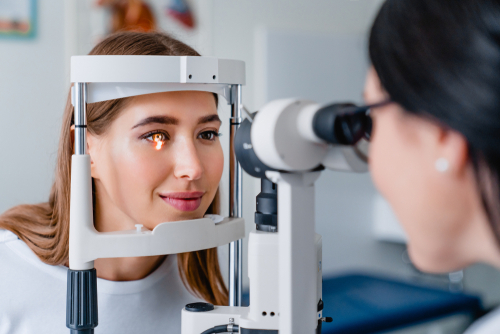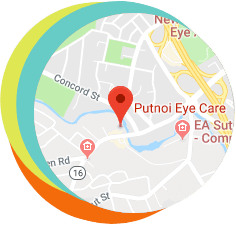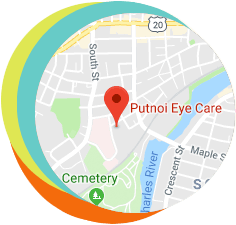
Are you considering LASIK? Before any procedure, it’s helpful to know what to expect.
Before: Finding Out If You’re a Candidate During the LASIK Consultation
Before you can have LASIK, you have to qualify as a candidate for the procedure. During your LASIK consultation at Putnoi Eye Care, you’ll undergo an evaluation with our in-house optometrist and Dr. Ko. The evaluation involves a complete eye exam and measurement of your eyes. We use the following state-of-the-art equipment during these evaluations:
Pentacam
Pentacam is an instrument used to take a three-dimensional image of the cornea and calculate necessary corneal measurements, such as corneal curvature and thickness.. Knowing the thickness of the cornea is an essential component of LASIK candidacy because if your cornea is not thick enough, it becomes unsafe to undergo LASIK.
OPD-Scan III Wavefront Aberrometer
The OPD-Scan III Wavefront Aberrometer is a type of corneal topographer that measures the anterior corneal curvature picking up on subtle dips and valleys that can affect the quality of vision after LASIK. Along with Pentacam, OPD is an invaluable tool in assessing the your candidacy for LASIK
Optical Coherence Tomography (OCT)
OCT lets us see the retinal structures. It can pick up on potential vision issues that a microscope cannot.
During the LASIK Procedure
If you’re a good LASIK candidate, the next step is scheduling your procedure. We will use numbing eye drops to ensure you don’t feel pain during LASIK before beginning the procedure.
Next, Dr. Ko will create a small incision using the WaveLight FS200 femtosecond laser to make a flap in the cornea. She will lift the flap to access the tissues around it.
After using the femtosecond laser, Dr. Ko will use the WaveLight EX500 excimer laser to reshape the cornea and correct refractive errors. The excimer laser follows the topographical map provided by your LASIK consultation to ensure that all exact visual aberrations of each patient are targeted and treated.
After reshaping only the necessary tissue, Dr. Ko will place the flap back in its original position. There is no need for stitches as the flap acts as a natural bandage while the eye recovers from the procedure.
After the LASIK Procedure
After having LASIK, you’ll need a friend or family member to drive you home. You may notice immediate visual improvements in the hours after LASIK, but if you don’t, this is also normal.
Each patient is different, and the time it takes to start seeing more clearly once you’ve had LASIK can vary. Your eyes may be itchy, gritty, or dry when you get home from your LASIK procedure. You can use eye drops and artificial tears to reduce discomfort. As you recover, these should start dissipating in the days after LASIK.
Use your prescription eye drops to help prevent infection and reduce inflammation. You’ll also want to make sure you attend all follow-up appointments with Dr. Ko. Your first one should be the day after having LASIK. These post-operative appointments are included in the cost of your LASIK procedure for a year following LASIK. The follow-up appointments help ensure your eyes are healing as they should.
Do you want to learn more about what to expect during LASIK? Take the first step by requesting an appointment at Putnoi Eye Care in Wellesley, MA, now!



